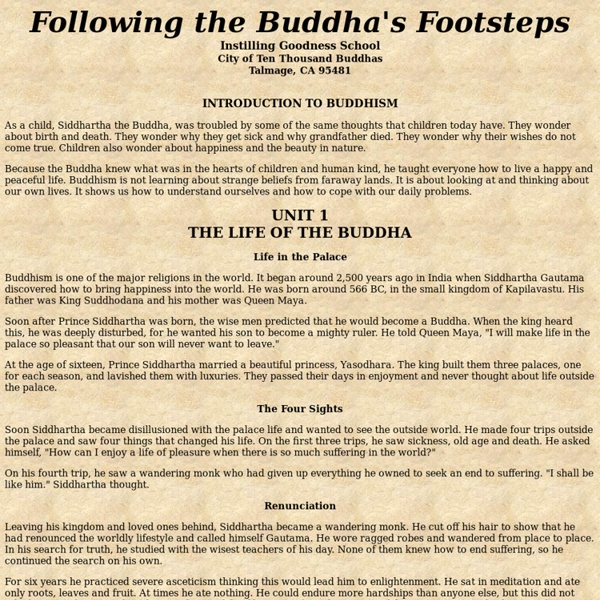Buddha Teachings

Teaching World History & Geography - Conceptual Frameworks
What to teach: conceptual frameworks This is the second component of a world history and geography body of knowledge to be taught in school: ....... chronological narrative ....... conceptual frameworks ....... thinking strategies What are conceptual frameworks? It is the job of conceptual frameworks to connect and organize knowledge to make it more meaningful. The alphabet, for example, is an artificial structure imposed on spoken language that enables us to read and write. A review of literature from history education and cognitive research strongly suggests that conceptual frameworks, by whatever name, contribute to meaningful understanding and should be a major component of history education. Themes History and geography educators often speak in terms of "themes" that represent an interest in phenomena that are manifested across several historical periods and/or geographic locations, and thus may offer useful insights into how humans generally behave and how the world generally works.
World History for Us All
EyeWitness To The Middle Ages and Renaissance
Life in a Christian Monastery, ca. 585"When he was dead his body was not placed with the bodies of the brethren, but a grave was dug in the dung pit, and his body was flung down into it. . . " Crime and punishment in a medieval monastery: the monastery's Abbott provides insight into the monastic life. The Vikings Discover America, ca. 1000"There was no want of salmon either in the river or in the lake." Five hundred years before Columbus, the Vikings discover a New World. Invasion of England, 1066The Norman conquest of Anglo-Saxon England described through the images of the 900 year-old Bayeux Tapestry. Anarchy in 12th Century EnglandThe Anglo-Saxon Chronicle paints a sobering picture of life in 12th century England that contrasts strikingly with Hollywood's image of the Middle Ages. The Murder Of Thomas Becket, 1170The killing of the Archbishop of Canterbury. The Crusaders Capture Jerusalem, 1099The assault and capture of the Christian "Navel of the World"
Related:
Related:



